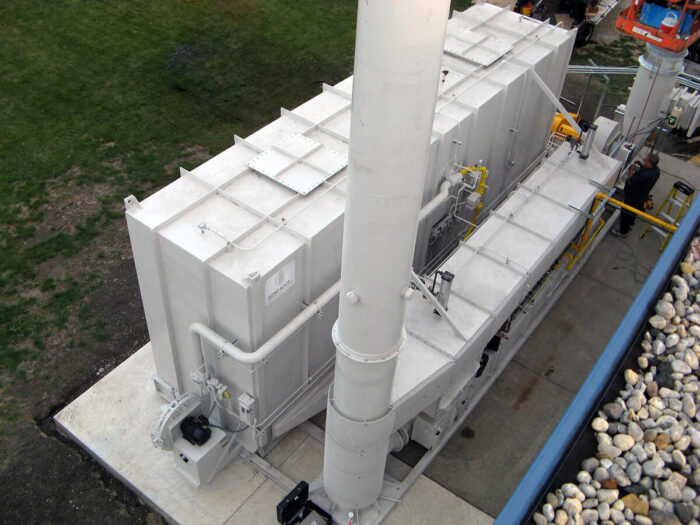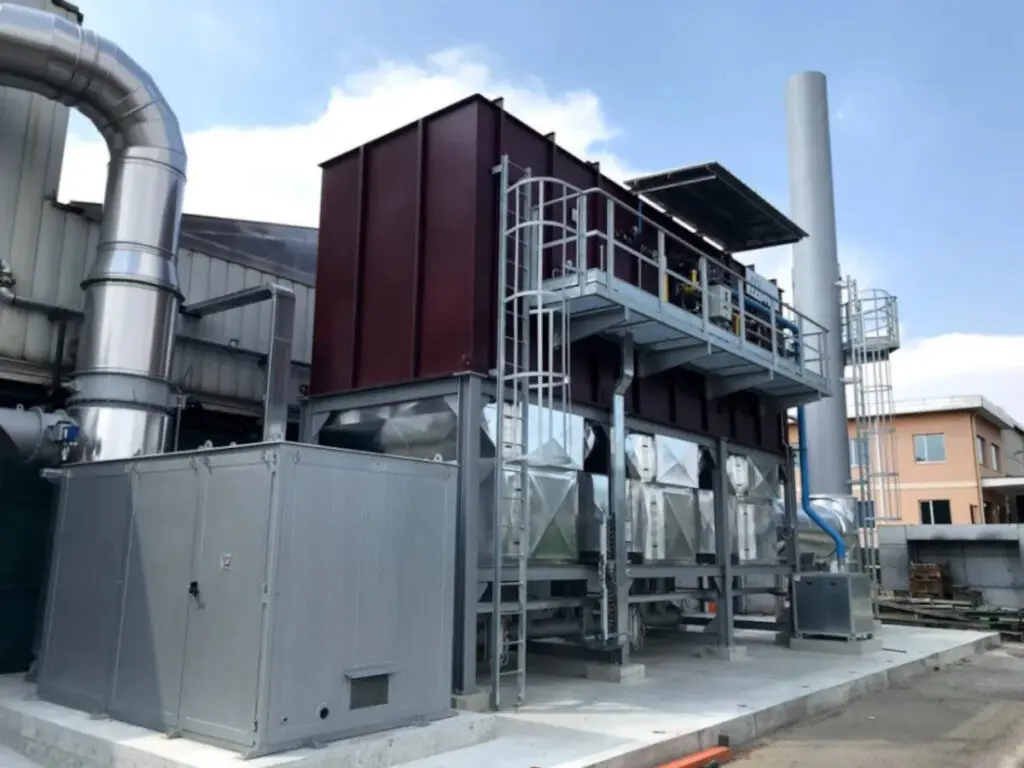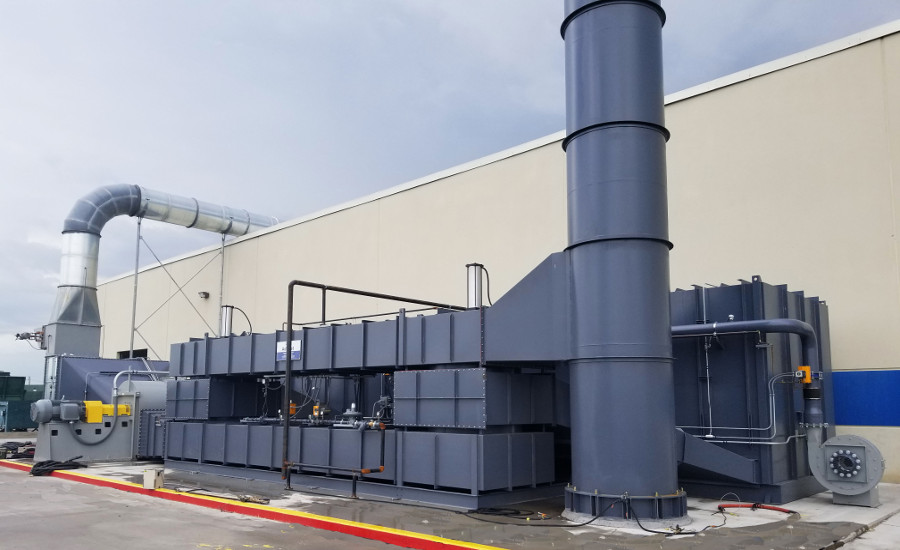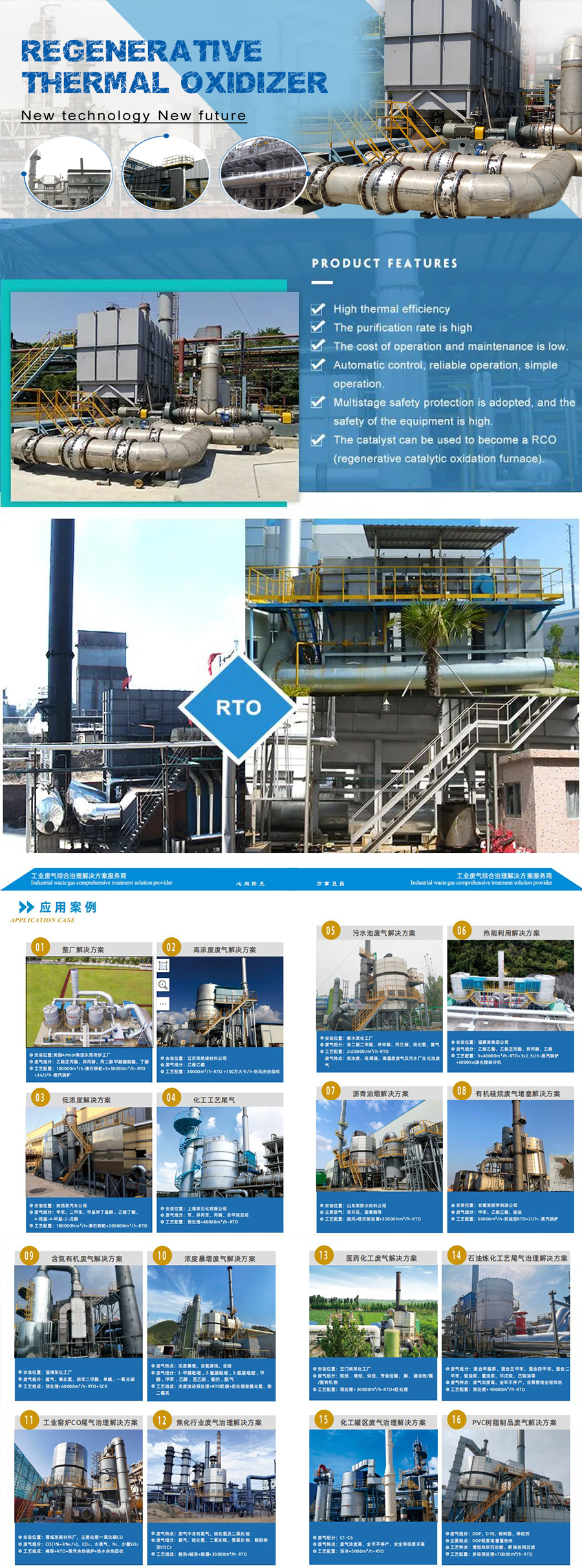Maklumat Asas.
Model NO.
RTO
taip
Instrumen Pemantauan Alam Sekitar
Fungsi Utama
Penyingkiran Gas Sisa
Permohonan
Industri Kimia
Jenama
Raidsant
Kecekapan Bersih
99.8%
keadaan
baru
Tanda dagangan
Raidsant
Pakej Pengangkutan
Filem Dibalut
asal usul
ZheJiang China
Penerangan Produk
HangZhou Raidsant Machinery Co.;,; Ltd.; mengambil jurusan dalam membangunkan dan mengeluarkan mesin pelletizing penyejuk serbuk inovatif dan mesin rawatan gas sisa industri yang berkaitan.; Dengan sejarah pengeluaran hampir 20 tahun,; kami mempunyai pasaran yang baik di lebih daripada 20 wilayah di China,; dan beberapa produk kami telah dieksport ke Arab Saudi, Singapura, Mexico,; Brazil,;Sepanyol,; Amerika,; Rusia dan Korea,; dan lain-lain;
Spesifikasi:;
* Lebih padat daripada kemudahan sedia ada
* Kos operasi rendah
* Jangka hayat kemudahan yang panjang
* Tiada perubahan tekanan
Tujuan:;
Sistem penjimatan tenaga yang membakar sebatian organik meruap (VOC); dan sisa gas dengan menggunakan haba,; dan ia mengumpul lebih 99.;8% haba buangan gas ekzos dengan menggunakan bahan penjana semula seramik (mangkin); dengan luas permukaan yang besar dan kehilangan tekanan rendah.;
Permohonan:;
1.; Proses pengeringan mengecat
2.; proses percetakan logam
3.; proses pengeringan gentian
4.; proses pita pelekat
5.; proses rawatan sisa
6.; proses pembuatan semikonduktor
7.; asap,; proses kuih-muih dan membakar
8.; proses petrokimia,;
9.; proses pembuatan ubat dan makanan,;
10.; proses penjanaan VOC yang lain
Kelebihan:;
* Lebih padat daripada kemudahan sedia ada
* Tiada perubahan tekanan
* Kadar pemulihan haba tinggi (lebih 95%);
* Rawatan VOC yang sempurna (lebih 99.;8%);
* Jangka hayat kemudahan yang panjang
* Kos operasi rendah
* Boleh dibuat dalam bulatan atau segi empat
Penerangan Umum dan Ciri:;
1.; Prinsip operasi
Kaedah pengendalian yang menukar nyahcas secara berterusan dengan memutarkan Injap Putar
2.; Perubahan Tekanan Proses
Tiada perubahan tekanan kerana arah angin berubah mengikut susunan mengikut putaran Injap Putar
3.; Kos Pelaburan
Sekitar 70% daripada Jenis Katil
4.; Ruang Pemasangan
Ia adalah kapal tunggal jadi ia padat dan memerlukan ruang pemasangan yang kurang.;
5.; Penyelenggaraan
Mudah untuk menyelenggaranya kerana Rotary Valve adalah satu-satunya 1 bahagian yang bergerak.;
Bahagian pengedap Rotary Valve jarang haus kerana ia berputar pada kelajuan rendah.;
6.; Kestabilan
Tiada risiko dalam proses kerana ia sentiasa dibuka walaupun Rotary Valve menghadapi masalah.;
7.; Kecekapan Rawatan
Kecekapan rawatan dikekalkan kerana bahagian pengedap jarang haus walaupun ia dikendalikan untuk masa yang lama.;
Alamat: No.3, Jalan Tengah Zhenxin, Zon Pembangunan Ekonomi, HangZhou, ZheJiang
Jenis Perniagaan: Pengeluar/Kilang, Syarikat Perdagangan
Julat Perniagaan: Bahan Kimia, Elektrik & Elektronik, Jentera Pembuatan & Pemprosesan, Keselamatan & Perlindungan
Pensijilan Sistem Pengurusan: ISO 9001
Produk Utama: Pelletizer, Flaker, Pastillator, Granulator, Chemical Pelletizer, Vocs
Pengenalan Syarikat: HangZhou Raidsant Machinery Co., Ltd., sebelum ini dikenali sebagai Kilang Jentera Plastik HangZhou Xinte mengambil jurusan dalam menghasilkan jentera kitar semula plastik yang inovatif. Dengan pengalaman hampir 20 tahun, kami mempunyai pasaran yang baik di 20 wilayah di China, dan beberapa produk kami telah dieksport ke Indonesia, Rusia dan Vietnam, dsb. Produk utama kami termasuk DZ Type Pastillator, barisan kitar semula tayar sisa, Big Caliber Plastic Talian kitar semula mesin pencincang paip, mesin salutan timah penyepuhlindapan berterusan, PET jenis QX, Talian basuh PE & badan kapal, penghancur kitar semula plastik SDP dua rel, pemotongan panas SJ unit pembuatan butiran, barisan produk tiub PVC (cinquefoil), barisan produk bahan PVC berbentuk ganjil untuk pintu dan tingkap, barisan produk butiran dalam air dan Mesin pencincang untuk plastik dan kitar semula. Kami memperoleh 5 paten teknikal.
Syarikat kami memberi penekanan kepada pembinaan semula teknikal, mengimport teknologi canggih dari dalam dan luar negara, dan membangunkan produk baharu secara berterusan. Prinsip kami adalah mencabar untuk kualiti tinggi, menawarkan produk terbaik. Kami sedang berusaha untuk merealisasikan slogan kami. Memuaskan pelanggan kami adalah usaha kami yang kekal.
Kami sedang mencari pelanggan atau ejen luar negara. Jika anda berminat dengan cadangan kami, sila beritahu kami produk mana yang paling mungkin menarik minat anda atau pelanggan anda. Kami sepatutnya sangat berterima kasih jika anda memberi kami beberapa idea tentang prospek pasaran untuk produk kami. Kami berharap untuk mendengar maklumat yang menggalakkan daripada anda tidak lama lagi! Adalah menjadi matlamat kami bahawa kami berharap kami dapat membina hubungan yang baik dengan anda sekarang atau dalam masa terdekat. Sila jangan teragak-agak untuk menghubungi kami jika anda mempunyai sebarang pertanyaan atau permintaan.
Kami juga mengalu-alukan kedatangan anda ke syarikat kami untuk membincangkan perniagaan dan berunding dengan kami. Untuk meluaskan lagi pasaran dan pelanggan kami, syarikat kami mengalu-alukan pelanggan dari dalam dan luar negara dalam isyarat jenama baharu berdasarkan konsep pengurusan baharu sepenuhnya—kualiti, penghormatan, perkhidmatan. Kami sedang mencari sistem kualiti pengurusan ISO 90001 untuk memenuhi keperluan pelanggan kami!

What are the limitations of regenerative thermal oxidizers?
While regenerative thermal oxidizers (RTOs) are widely used for air pollution control, they do have certain limitations that should be considered. Here are some key limitations of RTOs:
- High Capital Cost: RTOs typically have higher capital costs compared to other air pollution control technologies. The complexity of the regenerative heat exchanger system, which enables high energy efficiency, can contribute to the higher upfront investment required for RTO installation.
- Space Requirements: RTOs generally require a larger footprint compared to some other air pollution control devices. The presence of regenerative heat exchangers, combustion chambers, and associated equipment necessitates adequate space for installation. This can be a limitation for industries with limited available space.
- High Energy Consumption during Startup: RTOs require a certain amount of time and energy to reach their optimal operating temperature during startup. This initial energy consumption can be relatively high, and it is important to consider this aspect when planning the operational schedule and energy management of an RTO system.
- Limitations in Handling Low Concentration VOCs: RTOs may have limitations in effectively treating low concentration volatile organic compounds (VOCs). If the VOC concentrations in the exhaust gas are too low, the energy required to maintain the necessary temperature for oxidation may be higher than the energy released during the combustion process. In such cases, other air pollution control technologies or pre-concentration techniques may be more suitable.
- Particulate Matter Control: RTOs are not specifically designed for controlling particulate matter emissions. While they may provide some incidental removal of fine particulate matter, their removal efficiency for particulates is generally lower compared to dedicated particulate control devices such as fabric filters (baghouses) or electrostatic precipitators.
- Chemically Corrosive Gases: RTOs may not be suitable for treating exhaust gases containing highly corrosive compounds. The high temperatures within the RTO can accelerate corrosion of materials, and the presence of corrosive gases may require additional corrosion-resistant materials or alternative air pollution control technologies.
Despite these limitations, RTOs remain an effective and widely used technology for the destruction of gaseous pollutants in various industrial applications. It is important to evaluate the specific requirements, characteristics of the exhaust gases, and environmental regulations when considering the implementation of an RTO system.

What are the typical construction materials used in regenerative thermal oxidizers?
Regenerative thermal oxidizers (RTOs) are constructed using various materials that can withstand the high temperatures, corrosive environments, and mechanical stresses encountered during operation. The choice of materials depends on factors such as the specific design, process conditions, and the types of pollutants being treated. Here are some typical construction materials used in RTOs:
- Heat Exchangers: The heat exchangers in RTOs are responsible for transferring heat from the outgoing exhaust gas to the incoming process air or gas stream. The construction materials for heat exchangers often include:
- Ceramic Media: RTOs commonly use structured ceramic media, such as ceramic monoliths or ceramic saddles. These materials have excellent thermal properties, high resistance to thermal shock, and good chemical resistance. Ceramic media provide a large surface area for efficient heat transfer.
- Metallic Media: Some RTO designs may incorporate metallic heat exchangers made from alloys such as stainless steel or other heat-resistant metals. Metallic media offer robustness and durability, particularly in applications with high mechanical stresses or corrosive environments.
- Combustion Chamber: The combustion chamber of an RTO is where the oxidation of pollutants takes place. The construction materials for the combustion chamber should be able to withstand the high temperatures and corrosive conditions. Commonly used materials include:
- Refractory Lining: RTOs often have refractory lining in the combustion chamber to provide thermal insulation and protection. Refractory materials, such as high-alumina or silicon carbide, are chosen for their high-temperature resistance and chemical stability.
- Steel or Alloys: The structural components of the combustion chamber, such as the walls, roof, and floor, are typically made of steel or heat-resistant alloys. These materials offer strength and stability while withstanding the high temperatures and corrosive gases.
- Ductwork and Piping: The ductwork and piping in an RTO transport the exhaust gas, process air, and auxiliary gases. The materials used for ductwork and piping depend on the specific requirements, but commonly used materials include:
- Mild Steel: Mild steel is often used for ductwork and piping in less corrosive environments. It provides strength and cost-effectiveness.
- Stainless Steel: In applications where corrosion resistance is crucial, stainless steel, such as 304 or 316 grades, may be used. Stainless steel offers excellent resistance to many corrosive gases and environments.
- Corrosion-Resistant Alloys: In highly corrosive environments, corrosion-resistant alloys like Hastelloy or Inconel may be employed. These materials provide exceptional resistance to a wide range of corrosive chemicals and gases.
- Insulation: Insulation materials are used to minimize heat loss from the RTO and ensure energy efficiency. Common insulation materials include:
- Ceramic Fiber: Ceramic fiber insulation offers excellent thermal resistance and low thermal conductivity. It is often used in RTOs to reduce heat loss and improve overall energy efficiency.
- Mineral Wool: Mineral wool insulation provides good thermal insulation and sound absorption properties. It is commonly used in RTOs to reduce heat loss and enhance safety.
It is important to note that the specific materials used in RTO construction may vary depending on factors such as the process requirements, temperature range, and corrosive nature of the gases being treated. Manufacturers of RTOs typically select appropriate materials based on their expertise and the specific application.

Can regenerative thermal oxidizers reduce odor emissions?
Regenerative thermal oxidizers (RTOs) are effective in reducing odor emissions from industrial processes. While their primary purpose is to control and destroy volatile organic compounds (VOCs) and hazardous air pollutants (HAPs), they can also effectively mitigate odorous compounds.
Here’s how RTOs contribute to odor reduction:
- Oxidation of Odorous Compounds: RTOs operate at high temperatures, typically ranging from 1,400 to 1,800 degrees Fahrenheit (760 to 980 degrees Celsius). These elevated temperatures facilitate the complete oxidation of odorous compounds, breaking them down into harmless byproducts, such as carbon dioxide and water vapor. The thermal oxidation process ensures the destruction of odor-causing molecules.
- High Destruction Efficiency: RTOs are designed to achieve high destruction efficiencies, often exceeding 99%. This means that the vast majority of odorous compounds are effectively eliminated during the combustion process, resulting in a significant reduction in odor emissions.
- Retention Time: RTOs provide a sufficiently long retention time for the exhaust gases within the combustion chamber. This allows for thorough mixing and residence time necessary for the complete oxidation of odorous compounds. The extended contact time ensures that the odorous molecules have sufficient exposure to the high temperatures, resulting in their destruction.
- Control of VOCs: Many odorous compounds are also VOCs. By effectively controlling and destroying VOC emissions, RTOs indirectly reduce odor emissions as well. The comprehensive destruction of VOCs prevents their release into the atmosphere, thereby minimizing the associated odors.
- Monitoring and Optimization: Proper monitoring and optimization of RTO operation can further enhance odor reduction. By continuously monitoring the process parameters, such as temperature, airflow, and pollutant concentrations, adjustments can be made to optimize the performance of the RTO and ensure effective odor control.
It’s important to note that while RTOs are effective in reducing odor emissions, the specific odor compounds and their concentrations in the exhaust stream can influence the overall odor control efficiency. Additionally, proper design, operation, and maintenance of the RTO are crucial for achieving optimal odor reduction.

editor by Dream 2024-12-02
